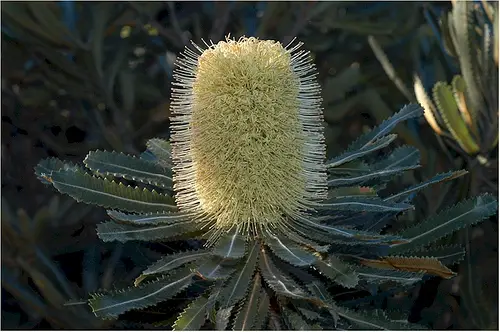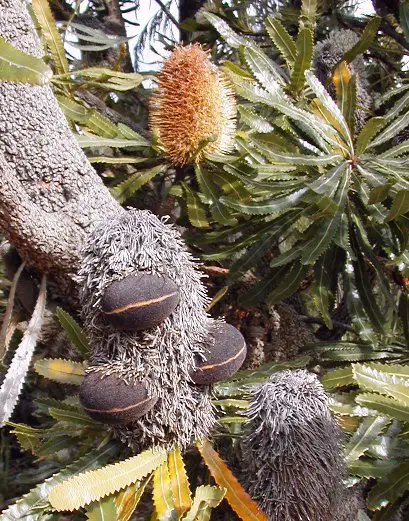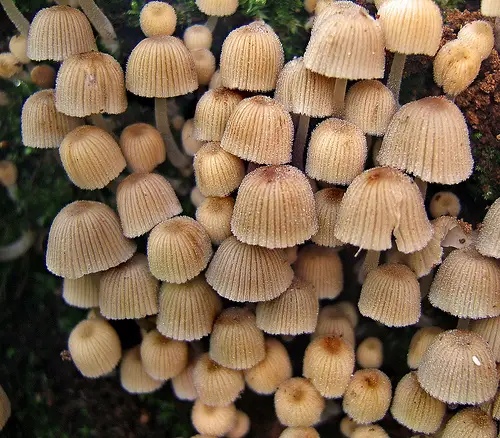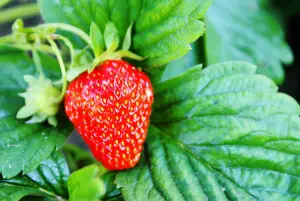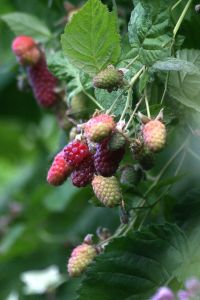Wallum banksia
The wallum banksia, also known as Banksia aemula, is a shrub that is found in Australia. It was first scientifically described by Robert Brown in the early 19th century. This plant is commonly found in gardens.
Wallum banksia usually are found as a gnarled shrub or small tree that can grow up to 8 metres tall. Its trunk is a thick orange-brown warty and wrinkled bark, despite the fact that new growth is hairy and then becomes smooth. New shoots grow during the spring and summertime. Its leaves are a shiny green, and are about 3 to 22 cm long and 1 – 2 wide. This plant flowers in autumn from march to June, and its inflorescences are terminal and green-yellow in colour. These inflorescences are about 4 to 20 cm tall and 8 to 9 cm wide. Between 800 – 1,700 small flowers will arise from this central spike which is initially tipped with white conical pollen presenters. Flowers then open up sequentially from the bottom to the top in a span of 1 to 2 weeks. Each flower will produce nectar for 7 days after it has opened. When they age, they turn grey and up to 25 grey follicles will appear measuring about 4 cm long. When there are bush fires, oval seeds will split from a woody lignotuber.
This plant was one of the first banksias to be cultivated in England. In 1788, it was illustrated in both the Curtis’s Botanical Magazine and The Botanical Register. Horticulturally speaking, it is an attractive plant due to its shiny green leaves, showy flower spikes, wrinkled bark, and huge follicles. It also attracts birds and insects.
In Australian culture, the wallum banksia and its huge follicles were thought to be the inspiration for the villains in May Gibbs’ Snugglepot and Cuddlepie series of books, the “Big Bad Banksia Men”.
